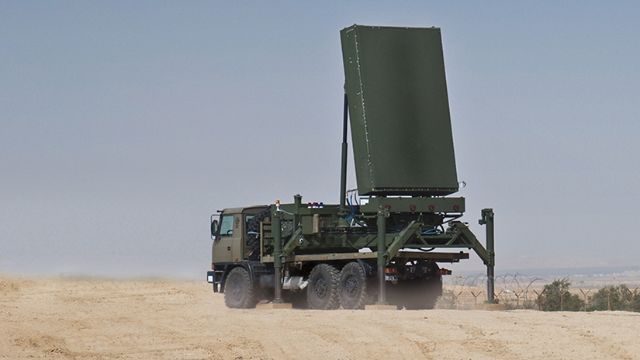BOSASO (KAAB TV) – The United Arab Emirates (UAE) has deployed cutting-edge radar technology to northeastern Somalia, specifically at the Puntland Naval Base, located adjacent to the Bosaso Air Base managed by the UAE. This move highlights both the deepening military footprint of the UAE and the strategic importance of the region.
The system deployed is the ELM-2084 3D Active Electronically Scanned Array (AESA) Multi-Mission Radar, a state-of-the-art technology developed by ELTA Systems, a subsidiary of Israel Aerospace Industries. It is capable of tracking drones, missiles, and artillery in real-time while offering comprehensive air defense capabilities. This development has been noted by military analysts and open-source intelligence platforms, raising new questions about the UAE’s long-term strategic aims in the Horn of Africa.
A Technological Powerhouse
The ELM-2084 is renowned for its versatility and accuracy. It can detect and track up to 1,100 targets simultaneously at ranges up to 470 kilometers, providing three-dimensional situational awareness. Its electronically scanned array allows it to adapt rapidly to threats without needing physical repositioning. The radar supports a wide range of missions including:
-
Air defense coordination
-
Tracking of ballistic missiles
-
Detection of artillery fire
-
Guidance for missile defense systems, such as Israel’s Iron Dome and David’s Sling
The system boasts a combat-tested success rate of over 90% against thousands of incoming missiles, making it a trusted component in modern integrated defense networks. Its mobile design—including a radar unit, control center, cooling system, and generator—makes it especially suitable for dynamic environments like Puntland.
Strategic Implications in the Horn of Africa
The Horn of Africa has become a geopolitical hotspot, with global and regional powers—including Turkey, Qatar, China, and Western countries—vying for influence. The UAE’s growing presence, particularly through military and commercial investments, signals a strategy to secure key maritime routes and expand its regional influence.
Puntland, situated near the Gulf of Aden, controls access to the Bab el-Mandeb Strait, a chokepoint through which over 12% of global trade and 30% of container traffic flows. The region’s importance has only grown amid recent threats, including Houthi attacks on Red Sea vessels and lingering piracy concerns. The UAE has managed the Bosaso Air Base since 2017, initially supporting Puntland’s navy in anti-piracy missions.
Expanding Capabilities and Regional Power Plays
The introduction of the ELM-2084 suggests a shift beyond local training and anti-piracy operations. Its deployment could serve several purposes:
-
Enhanced surveillance of sea and air traffic
-
Detection of regional threats, such as drones and missiles from Houthi forces
-
Intelligence gathering, tracking both military and commercial movements
The radar’s arrival also reflects the UAE’s growing defense ties with Israel, formalized through the Abraham Accords in 2020. Choosing Israeli technology over American or Russian alternatives indicates not only a preference for versatile and mobile systems but also strategic alignment with Israel in defense innovation.
In contrast:
-
The U.S. AN/TPQ-53 focuses on predictive artillery tracking.
-
The Russian 96L6E specializes in long-range air defense.
-
The Chinese Type 346 is more naval-focused and lacks the ELM-2084’s land mobility.
Local Impact and Political Undercurrents
While technically deployed in Somalia, the radar’s placement in Puntland—a semi-autonomous region—rather than under the jurisdiction of the Somali federal government in Mogadishu, may reflect growing political rifts. Puntland has long sought greater autonomy, and the UAE’s direct dealings with its leadership could be seen as tacit support for its independent agenda.
The region also faces internal security challenges. Puntland security forces have recently engaged in significant operations against Daesh (ISIS) militants in the Al-Misqaat Mountains, reportedly killing over 150 fighters in February 2025, according to the Washington Post. The radar system could enhance such operations by supporting drone surveillance and counter-mortar tactics.
However, the increasing militarization is not without controversy. UAE activities in Bosaso have previously sparked protests from local fishing communities, concerned about restricted access to coastal waters. The radar deployment may inflame those tensions if perceived as prioritizing foreign interests over local needs.
Economic and Strategic Integration
Beyond defense, the UAE’s investments in Puntland have strong economic dimensions. Its state-owned company, DP World, has invested heavily in Bosaso Port, aiming to transform it into a key commercial hub. The radar system could provide security for this infrastructure, safeguarding trade routes and enhancing the UAE’s vision of military-commercial integration—reminiscent of British naval strategies in Aden during the 19th century.
Additionally, the system may serve as a training platform, transferring technical knowledge to Puntland forces and deepening UAE influence through capacity-building.


